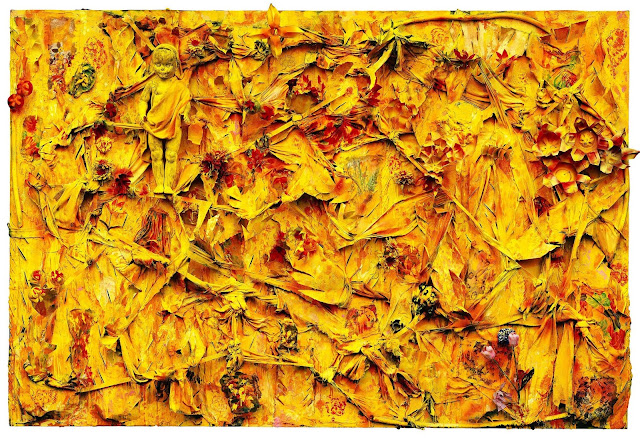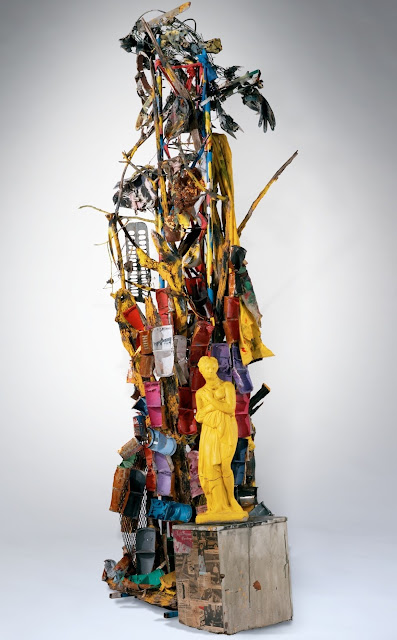Thornton Dial, a self-taught artist whose paintings and assemblages fashioned from scavenged materials told the story of black struggle in the South and found their way to the permanent collections of major museums.
Thornton Dial was a pioneering African-American artist best known for his large-scale assemblage paintings. He melded complex themes like Civil Rights history, archaeology, and construction, through the use of materials like cow skeletons, American flags, and rebar. Often referred to as an “outsider artist,” Dial’s work is highly biographical. Born on September 10, 1928 in Emelle, AL, Dial's youth was filled with hardship, born into poverty on a sharecropping farm. Though he never received any formal art training, he made sculptures from found objects from a young age. Dial spent much of his life working construction for the Pullman Company, around Birmingham, AL. In 1981, he retired from welding and construction and devoted himself to his art.
"From the complex, exuberant textures of his assemblages to the deft, fluid lines of his drawings, Dial’s facility as an artist was truly extraordinary,” Sheena Wagstaff, the chairwoman of the department of modern and contemporary art at the Met, said on Monday. “He leaves us with a body of work that is a rich visual manifestation of a life history, one that witnessed a remarkable time of change in the world from the perspective of an African-American man.”(nytimes.com)
Thornton Dial was a pioneering African-American artist best known for his large-scale assemblage paintings. He melded complex themes like Civil Rights history, archaeology, and construction, through the use of materials like cow skeletons, American flags, and rebar. Often referred to as an “outsider artist,” Dial’s work is highly biographical. Born on September 10, 1928 in Emelle, AL, Dial's youth was filled with hardship, born into poverty on a sharecropping farm. Though he never received any formal art training, he made sculptures from found objects from a young age. Dial spent much of his life working construction for the Pullman Company, around Birmingham, AL. In 1981, he retired from welding and construction and devoted himself to his art.
"From the complex, exuberant textures of his assemblages to the deft, fluid lines of his drawings, Dial’s facility as an artist was truly extraordinary,” Sheena Wagstaff, the chairwoman of the department of modern and contemporary art at the Met, said on Monday. “He leaves us with a body of work that is a rich visual manifestation of a life history, one that witnessed a remarkable time of change in the world from the perspective of an African-American man.”(nytimes.com)
















No comments:
Post a Comment